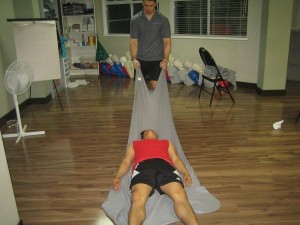Introduction
A broken leg (leg fracture) will be very sore and might be inflamed or bruised. You generally won’t be able to walk on it. If it’s a serious fracture, the leg might be an abnormal shape and the bone might even be pushing out of the skin. There might have been a “snap” sound when the leg was broken and the pain of breaking your leg might cause you to feel weak, shaky or sick.
What to do
If you think you or somebody else has broken their leg, go straightaway to your nearby emergency department. Phone for an ambulance if the injury appears serious or you’re not able to get to A&E quickly.
While you waiting for an ambulance:
- Don’t move the damaged leg as much as possible – keep it straight and place a pillow or clothing below to support it.
- Don’t try to straighten any bones that are distorted.
- Shield any open wounds with a disinfected dressing, a clean rag or a fresh item of clothing – place direct force on the wound if it keeps bleeding.
If the individual is insipid, cold and perspiring (in shock), lie them down and cautiously relax their legs above the level of their heart to increase their blood flow. When elevating the broken leg, make sure it’s kept straight and reinforced by a pillow. Keep them warm and composed until you can get medical assistance.
How a Broken Leg is Treated
Immobilisation

- First, a GP will give you sedatives and might fix a strap to your leg to secure it in place and avoid further damage. For serious pain, you might be given anaesthetic via a face mask or medicine through a drip into a vein. An X-ray is often required to evaluate the fracture.
- If the broken bone is still in place, you’ll generally just need a plaster cast. This clamps the bone in place so it can rebuild. If there’s a lot of inflammation, you might just have a splint or cast around the back half of your leg till the inflammation decreases. A full cast can be fixed a few days later.
- You might be provided with sedatives to take home and info on how to care for your cast.
Reduction
- If the bones are uneven, a GP or surgeon might need to place them back into place. This is known as “reduction”.
- Tranquillizers are sometimes provided prior to the procedure and anaesthetic is used to deaden the area surrounding the broken bone. In some circumstances, a general anaesthetic is required (which means you’ll be sleeping throughout the procedure).
- Once the bones are in the right position, a plaster cast can be used.
